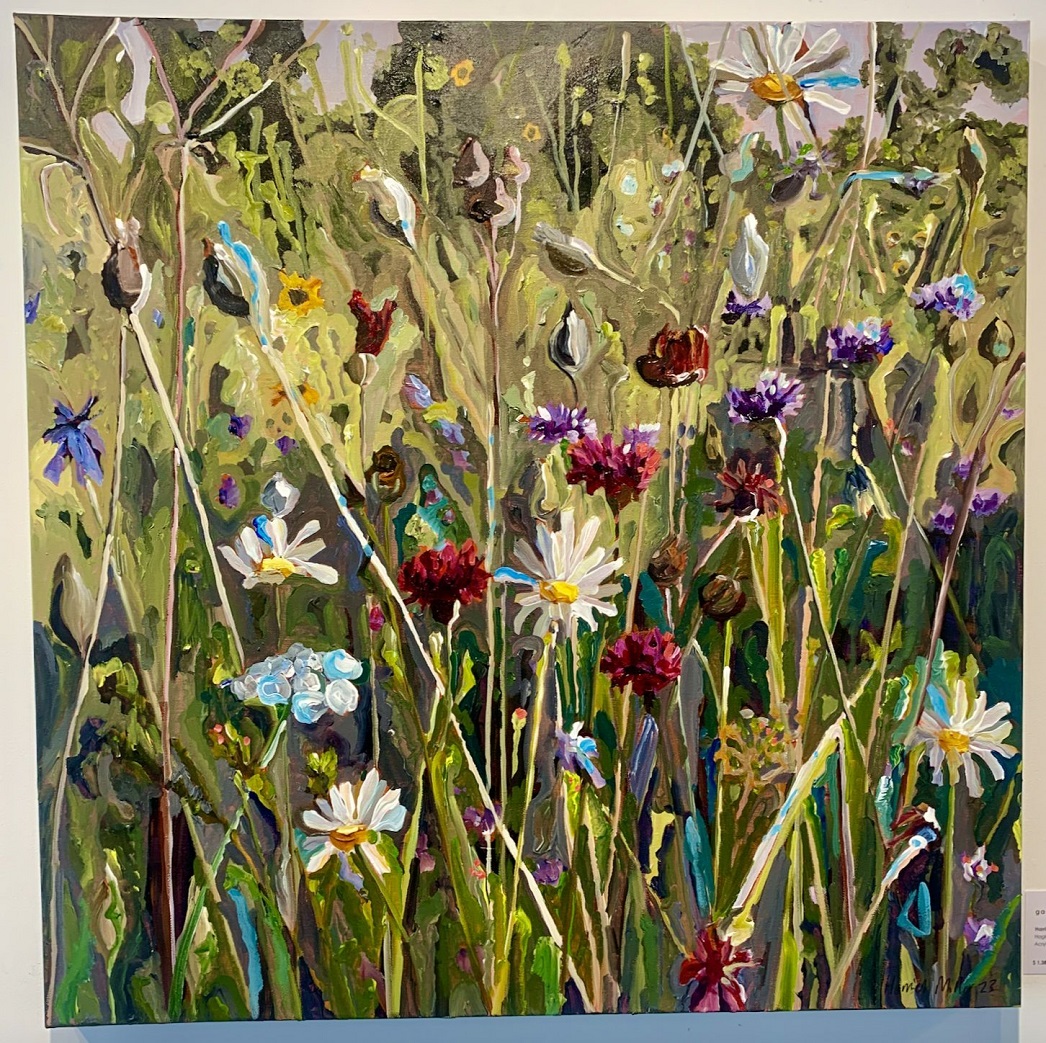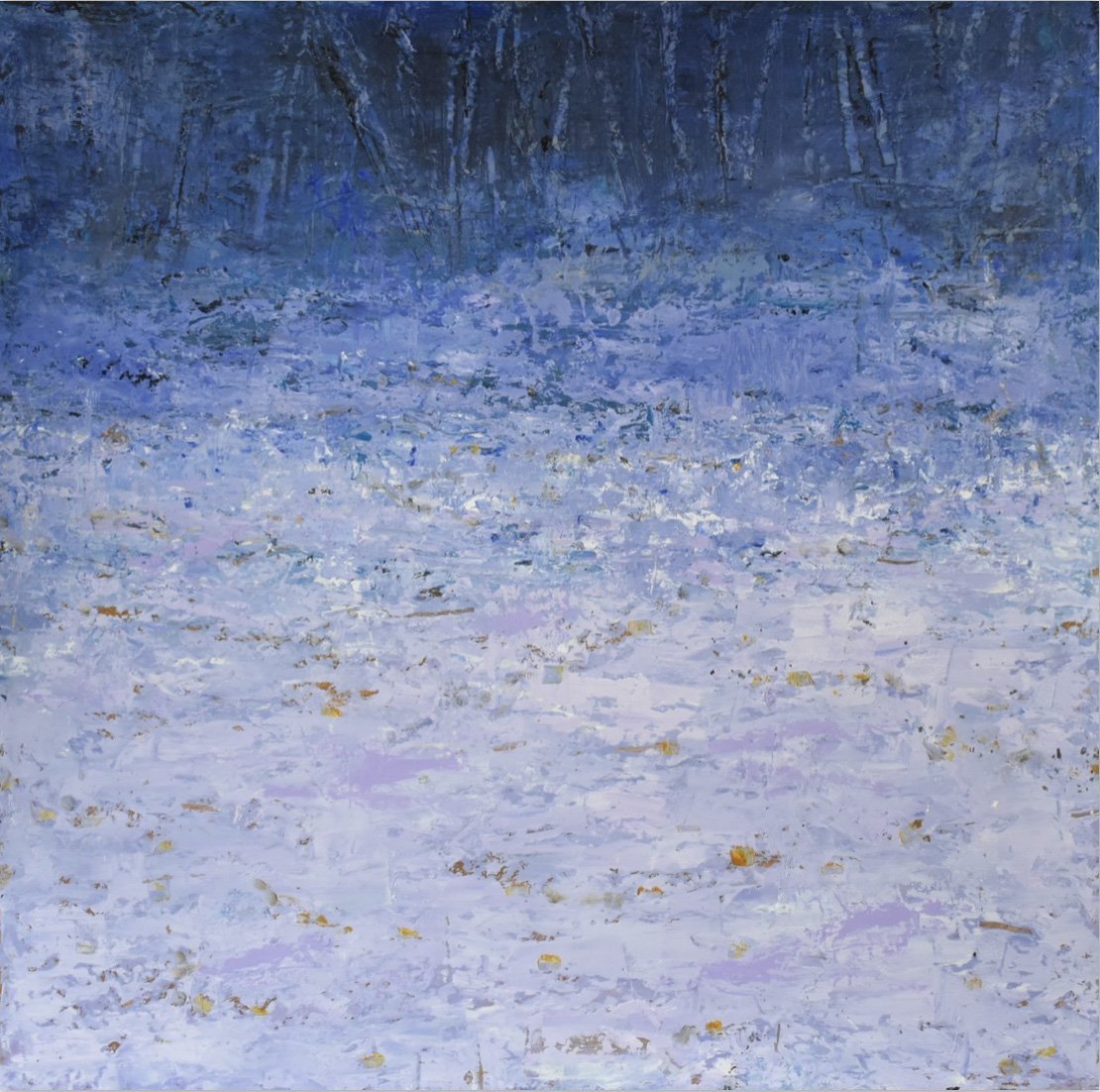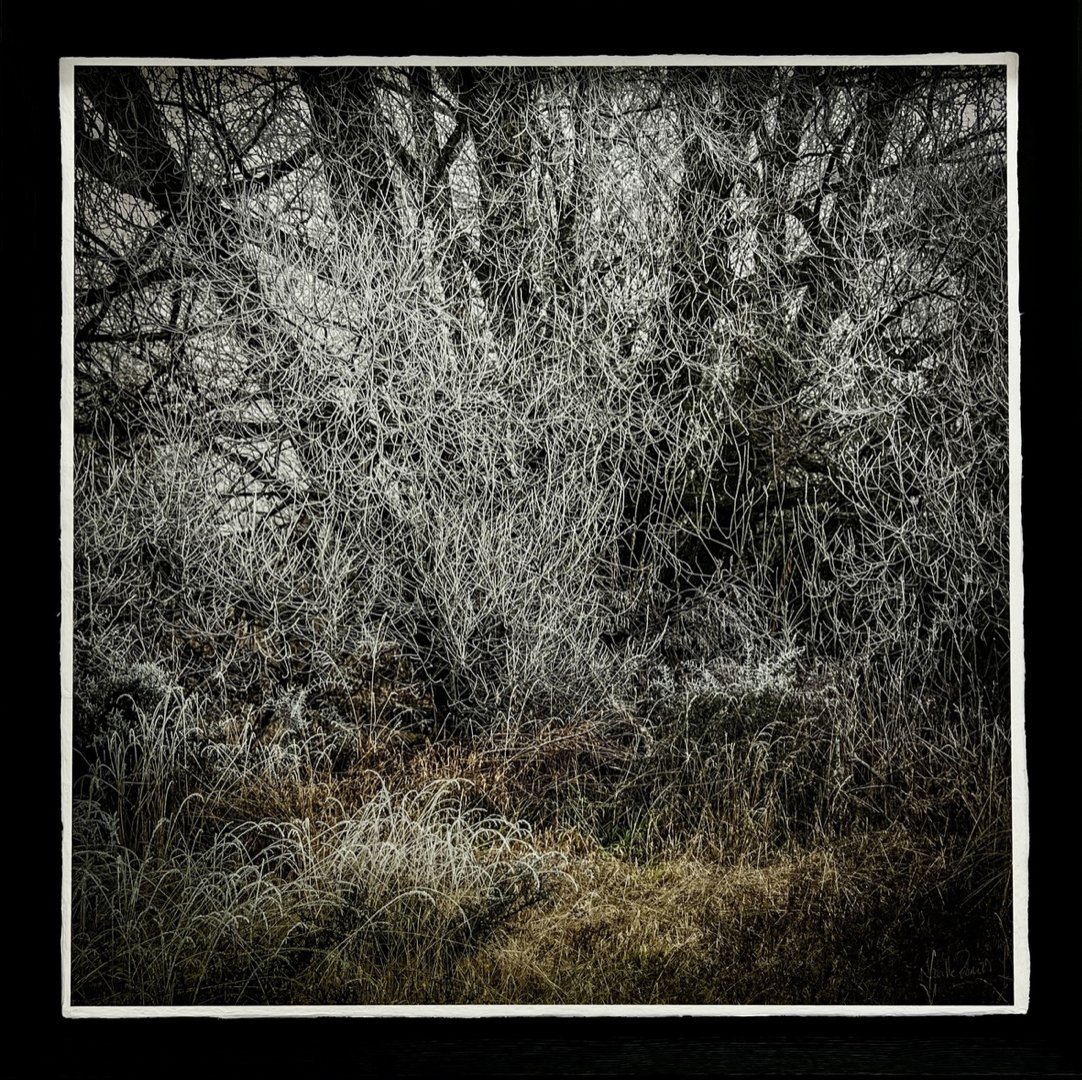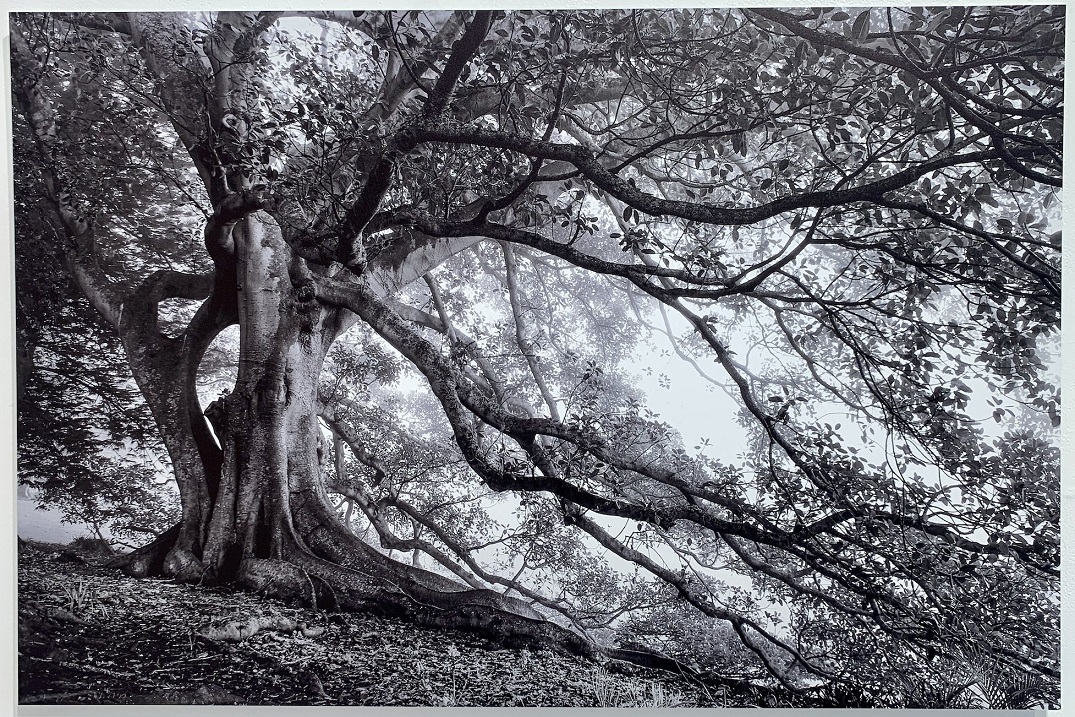
(Gallery Thirty Three, Wanaka)
Outside the gallery walls, autumn is sweeping in, but inside, painted flowers are in full bloom, immersing the visitor in a perpetual summer and celebration of all things botanical.
Katie Hayles recognises and appreciates that every person will have a different relationship with the natural world, depending on their memories, knowledge, and beliefs. How we approach the land around us, whether we see the magic or the mundane, focus on the most minute details or let our eyes skim over the surface, is an ever-changing experience. Her expressive style seems to draw in light and shimmer with energy, tugging the viewer into each gorgeous setting, and waiting for their instinctive reaction and personal connections to the imagery to fill in the rest of countless potential stories.
Harriet Millar’s highly textural works are an explosion of colour, the generous brushstrokes so rich and glossy that acrylics look almost like oils. Each piece is joy in painted form. The gorgeous Hagley Park Wildflowers brings the peaceful feeling of lying in the park or a meadow; you can almost hear the faint buzzing of bees and fluttering insect wings. John Oxborough and Siobhan Wooding take a deeper turn into abstraction, but with distinctly different styles. Oxborough’s still lifes put as much focus on the physical medium and act of creation as the subject, while Wooding’s confetti-bursts of colour seem to be in a constant state of flux, taking one form on the canvas but perpetually reshaping in the viewer’s mind as they evoke familiar scenes and memories.

(Eade Gallery, Clyde)
In their duo solo exhibition, painter Nigel Wilson and photographer Neville Porter join forces with distinctive representations of the New Zealand landscape, capturing the nuances and spirit of the land with their unique styles. Each artist uses handmade Japanese washi paper as their canvas or printing medium, working to the same dimensions but otherwise letting their inspiration and imagination lead them on their own journeys.

Porter’s photography is a visceral gut-punch of stunning imagery, from the sun-dusted, verdant forest in Charleston Bush Walk, West Coast to the ethereal, ghostly Ida Valley Winter, Maniototo, where bare, skeletal branches cross and cluster like an intricate spider’s web or threads of antique lace. The moon hangs above The Remarkables, Queenstown with crisp, lustrous perfection, a scene from a fairy tale. Ironically, the depiction of reality through Porter’s lens has an almost unearthly beauty.

(Hullabaloo Art Space, Cromwell)
With the slight haze of a morning fog, the light is a gentle glow through clustered leaves. The central tree is a solemn pillar of contemplation and protection, stretching its leaves to the farthermost corners of the canvas, blocking out all view of chaos and hardship in the world beyond. In an adjacent image, another tree sweeps gracefully down towards the leaf-scattered ground, with an almost cinematic effect and a sense of expectation, as if waiting for the next person to cross its path, seek solace in its shelter, rediscover hope beneath its boughs.
A painting can be so remarkably realistic that its audience would swear they were looking at a photograph. Conversely, Eric Schusser’s photography sometimes has the effect of a painting, a resonance, a sense of such feeling and atmosphere that it’s hard to believe each detail wasn’t carefully drawn out and situated by hand. His latest collection is a reflection on life and love, loss and tenacity and eternity, both globally and very personally.
Amidst the ongoing destruction of our forests and woodland, Schusser’s lens finds poignant beauty from every form and in the smallest detail, and takes the time to simply pause and reflect. The images are a reminder of our deep connection with nature and people and the world around us, and each moment and memory caught up in those sheltering, embracing branches.
By Laura Elliott


![Rozana Lee, "Drawn to see(a)" [Installation view]. Photo: Beth Garey](https://www.odt.co.nz/sites/default/files/styles/odt_landscape_small_related_stories/public/story/2024/10/blue_oyster_r_lee.jpg?itok=IGhlKMSl)



![Phaeacia (2024), by Paul McLachlan [detail]. Acrylic and rust on canvas.](https://www.odt.co.nz/sites/default/files/styles/odt_landscape_small_related_stories/public/story/2024/09/paul_mclachlan_phaeacia_de.jpg?itok=UuQsvnQc)





